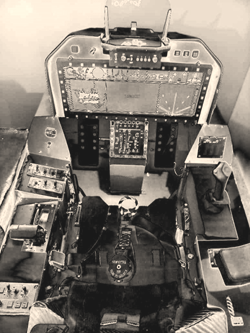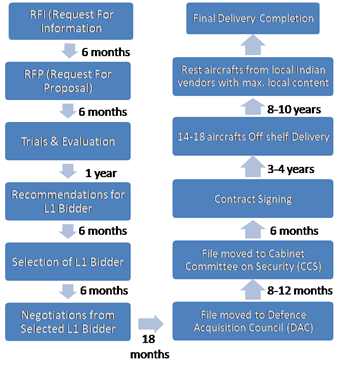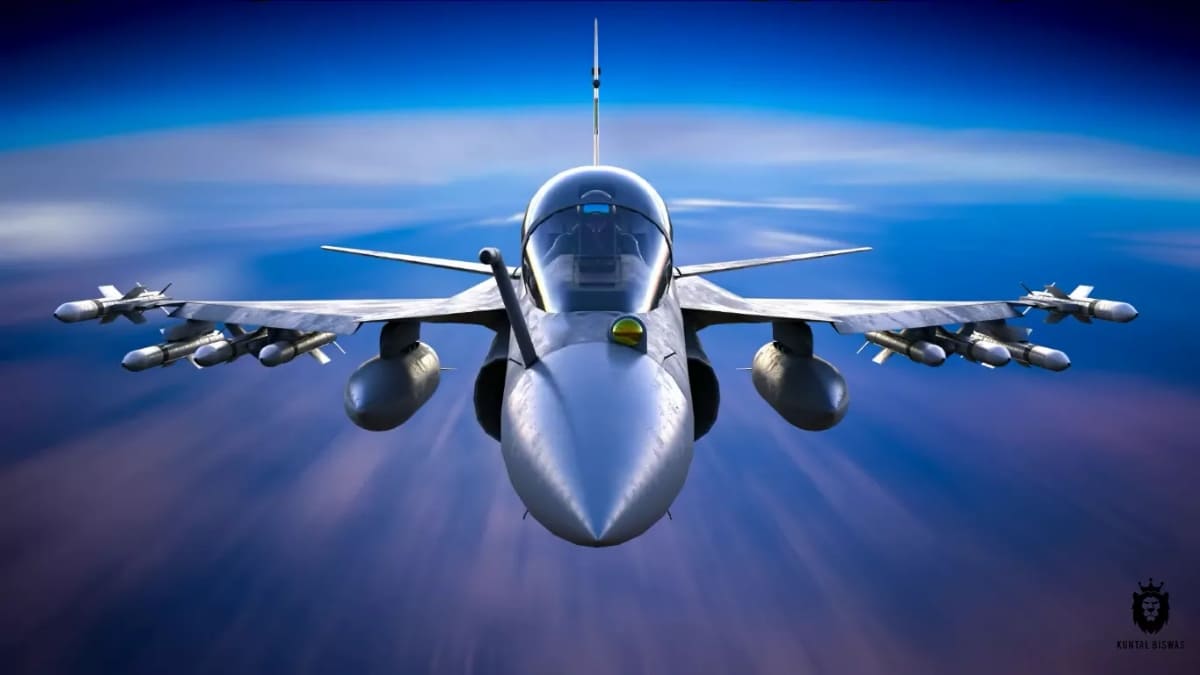Tejas Mk2 has been the talk of the town recently when the new IAF Chief, Air Chief Marshal VR Chaudhari stated recently that 7 squadrons of Tejas Mk2 are projected for induction in the coming years while discussing the future roadmap of the Indian Air Force’s modernization plan. This is an important announcement not only towards the significant capability enhancement of IAF but a move closer to the Atmanirbhar Bharat campaign.

Recent Updates in Tejas Mk2 Project:
- The Preliminary Design Review (PDR) phase (stage where new technologies are tested & if mature enough, are integrated to product subsystem) was completed at the beginning of 2021.
- Currently, the Critical Design Review (CDR) phase (multiple discipline technical review such that a system can proceed to fabrication, demonstration and testing to meet desired performance within scheduled time and cost) is ongoing which will be completed by the end of 2021. Currently, completion of detailed design, taking up of aircraft level CDR with specific metal cutting (which commenced from Feb 2021) is being worked upon.
- More than 60% work prior to the flight tests has been completed. This includes completion of finalization of cockpit configuration, sensors, antennae, process finalization for drawing release, procurement of raw materials & its availability assessment, detailed design of various subsystems, finalization of SOPs for first flight.
- First prototype of the aircraft will roll out by August 2022 and the flight tests will commence from 2023 onwards.
Key Features of Tejas Mk2:
- Fuselage: Tejas Mk2’s fuselage comprises 90% (by surface area) carbon-fibre composites along with metallic components forming complex geometries utilizing Titanium, Aluminum and maraging steel. It sports a lengthened fuselage up to 14.65 m as compared to its predecessors Tejas Mk1 and Mk1A (fuselage length: 13.9m) to compensate for the space constraint in the earlier versions.
It retains the iconic double delta main wing, featuring lower sweep angle for the inboard section which helps bring down the static instability to a manageable range. The changes in the Mk2 version include elongated and flattened front fuselage, addition of a nose plug, optimized canopy shape and rear fuselage, which will lead to improved transonic and supersonic performance of the aircraft. Close coupled canards which were even intended for the Mk1 (but failed in the wind tunnel studies earlier & hence dropped from LCA Tejas) is one of the prominent features of Tejas Mk2. These canards provide additional lift, improves wing lift, reduces trim drag, transonic and supersonic drag, can be used as air brakes during landing & allows increase in fuselage’s length (one of the key requirement of original Air Staff Qualitative Requirements, ASQR, 1985) . The disadvantage of directional instability brought by the canards has been compensated by increasing the height of the tail fin (and few other measures).

- Weight capacity: With a superior engine F414-GE-INS6 (Max Thrust: 98kN wet thrust) and a larger airframe, Tejas Mk2 has a MTOW (Maximum Takeoff Weight) capacity of 17500 kg and maximum payload capacity of 6500kg and internal fuel capacity of 3300kg while it can carry 3 external fuel drop tanks: 1 drop tank at centerline fuselage of 1300kg capacity and 2 at sideways of 1700kg capacity each.
- Radar, Sensors, Electronic Warfare Suite & Cockpit: Radar: Upscaled indigenous Gallium Arsenide based Uttam AESA (Active Electronic Scanned Array) radar will be featured in the aircraft. According to Dr. V. Madhusudana Rao, Project Director, Tejas Mk2, the Uttam radar for Tejas Mk2 will carry around 992 Transmit Receive Modules (TRM, the building blocks of AESA Radar) capable of detecting targets as small as 0.0001 m2 Radar Cross Section (RCS) area. Sensors: Indigenous Infrared Search and Track (IRST) system for passive target acquisition will also be featured at the nose plug of the aircraft along with indigenous Radar Warning Receiver (RWR) at the tailfin along with Software based defined radio based tactical data link for secured communication and network centric warfare capabilities supported by IAF’s AFNet digital information grid. Electronic Warfare Suite: It will sport an integral Unified Electronic Warfare Suite (UEWS) and a dual colour Missile Approach Warning System (MAWS) developed indigenously by DARE (Defence Avionics Research Establishment). Cockpit: The Cockpit will feature state of the art Large Area Display of 0.5m x 0.2m with sideways Hand on Throttle and Stick for better view and comfort of the pilot.

Image credits: Dr. Anantha Krishnan Muralidharan Nair, @writetake, Twitter
- Armaments: The aircraft comprises 11 hard points where the weapons, drop tanks and low band jammer can be mounted. According to Dr. V. Madhusudana Rao, each hard point has the capacity to carry a weight of 1800kg and any weapon coming under this weight category can be mounted on the aircraft. It is stated to carry a variety of BVRAAMS (Beyond Visual Range Air to Air Missiles like R73, R77 from Russia, ASRAAM & Meteor from European consortium MBDA, Python 5 & i-Derby from Israel, indigenous Astra family of missiles. Apart from it, it can carry a variety of indigenous weapons like anti radiation missile Rudram, supersonic cruise missile Brahmos NG, laser guided bomb Sudarshan, glided bombs like Gaurav and Gautam, Smart Anti Airfield Weapon (SAAW), swarm drones like ALFA-S. Currently the feasibility studies to integrate indigenous under development Brahmos NG and Astra Mk2 missile has been undergoing in the aircraft.
OBOGS: The OBOGS (On Board Oxygen Generating System) is a state of art system developed by DEBEL, under DRDO, in which Oxygen is separated from the bleed air from the engine and processed through ‘sieves’ and ‘adsorption process’ and pumped to the cockpit. It helps the pilot to stay alert for a longer duration of time replacing the need to replenish the oxygen cylinder. - Semi Stealth Aspects: Though not designed for stealth aspect, Tejas Mk2 does possess semi stealth characteristics for a reduced Radar Cross Section (RCS) rendering it less detectable to Radars. Use of 90% by surface area Carbon-Fibre Composites, Radar Absorbent Material (RAM) coating, Indium-Tin Oxide coating on canopy to prevent radar reflections on Pilot’s helmet, Y shaped air intakes which prevents line-of-sight of engine from radar signatures and software derived canard positions for minimal radar deflections may lead to a low overall RCS of around0.1-0.2m2

Should Tejas Mk2 be preferred over MRFA?
One of the surprising elements of the IAF modernization roadmap discussed by the Air chief was the inclusion of 114 Multi-Role Fighter Aircraft (MRFA) comprising of a variety of aircraft from foreign vendors. It includes Su-35 and Mig-35 from Russia; F-21, F/A-18E/F Super Hornet, F-15EX from the US; multinational Eurofighter Typhoon; Rafale from France and Gripen from Sweden. The MRFA or earlier MMRCA (Medium Multi-Role Combat Aircraft) project did make sense about a decade ago but with Tejas Mk2 around the corner, the scenario has changed. Being the project where IAF was an active part of the preliminary design which proceeded only when all the user’s requirements as stated in the original Air Staff Qualitative Requirements, 1985 were met, the Tejas Mk2 project may be beneficial for IAF modernization in the long run as compared to MRFA. This can be attributed to the following aspects:
Timeline of MRFA: Even if the MRFA project is taken in the most efficient manner from now, the 114 fighter jets may get delivered earliest by 2030s. Let’s understand the timeline via. Step by Step analysis of the probable defence acquisition process (with minimum estimated time between each step) through the help of this flowchart:

- The main intention of improving the squadron strength quickly with MRFA looks bleak considering the longer timeline and bureaucratic hurdles. Also timelines may be impacted by the change in governments at the centre. As already witnessed, the current opposition has been doing the witch-hunt against a clean G2G Rafale deal while directly/indirectly lobbying for the Eurofighter Typhoon. Further, it has to its credit the recent infamous scandals of Pilatus trainer aircraft and Agusta Westland helicopter. Hence, a longer timeline brings a lot of complexity as well as question marks in the acquisition process.
- Cost: The cost of MRFA is estimated at a whopping $25-30Bn, if not more. If even a fraction less of this amount is pumped into the Tejas Mk2 and related indigenous projects then it will boost not only the indigenous technology creation but can also lead to production of a larger no. of Tejas Mk2 aircrafts than the MRFA.
- Platform Upgrade & Obsolescence Management: HAL, the owner of technical design IP in Tejas Mk2 is capable of handling any type of unilateral upgrades, additional requirement of change in specifications, integration of new weapons, sensors etc. with considerably less effort. On the other hand, dependency on foreign OEMs for continuous upgrades and obsolescence management can lead to enormous cost and considerable drain of foreign exchange during aircraft’s life cycle in case of MRFA.
Tejas Mk2 is a very formidable aircraft that is nearing its production and will certainly add more teeth to the IAF inventory and will successfully replace the aging fleets of Jaguar, Mig-29, and Mirage 2000. The projected induction of 7 squadrons of Tejas Mk2 as mentioned by the IAF chief is a welcome step. It is high time IAF invests heavily into the project and orders Tejas Mk2 in large numbers rather than looking for the foreign silver bullets. This will not only boost the indigenous aerospace development but will also improve the chances of export, making Tejas MK2 a true ‘pride of India’.
References:
- Tracking The Tejas: How The Tejas Mk2 Design Became The Medium Weight Fighter, https://delhidefencereview.com/2019/02/23/tracking-the-tejas-the-tejas-mk2-grows-a-pair-becomes-the-medium-weight-fighter/
- Inspiring ADA | LCA Mk-II CDRs by end of this year: Dr Girish | Part-IA, Tarmak Media House, https://youtu.be/TWxiQ9Pmxi0
- Inspiring ADA | #LCAAFMk2 will roll out by August 2022: Dr Madhusudana Rao | Part-5, Tarmak Media House, https://youtu.be/G30L78MSdQk
About the Author: Udit Tripathi, @i_udit_t, Twitter. The views expressed are the author’s own.
Header Image source: Artistic Representation of Tejas Mk2 by Kuntal Biswas


Are the external Drop Tanks 1×1300 Kg (Centreline) and 2×1700 Kg (Wing tanks), as mentioned in the text OR are they 1×1300 Litres and 2×1700 Litres? The same as the Mirage 2000.
LikeLike
Good question. Needs to be checked with the Author. Regards
LikeLike
Tejas mk2 should be inducted in the IAF as soon as possible, & we should pump more funds in DRDO & HAL to FastTrack the production of our own fighter’s & weapon systems instead of buying 4-4.5 generaton foreign fighters & quickly build up already depeleted squadron strength.
LikeLike
Yes, I agree with you, Tejas Mk2 is a state of art 4.5x gen fighter jet which has been made specifically for multi role capabilities. The LCA and LCA Mk2 project has been a technology generator for us and have made us self reliant in many critical technlogies like AESA radar, EW suite, avionics, carbon fibre conposites etc. It is high time we back up our very own world class standard Tejas Mk2 aircraft which is capable to replace the ageing Mig29s, Mirage 2000s and Sepecat Jaguars. Much more than that it will be also lead to the maturation of new technologies for our the 5th generation AMCA aircraft which is under development.
LikeLike
Not scrapping MRFA is a political ploy to continue getting
co-operation from foreign fighter manufacturrers .
ATMANIRVAR manufacture of Tejas Mark 2 will continue as long as Modi is in charge, 36 more Rafael will be purchased to fill the shortages
LikeLike
I want to say that the need to replace the ageing fleets of Mirage 2000, Mig29, Jaguars and the RFI was floated in 2001 for the same as LCA Tejas was still under development and was delayed due to sanctions, lack of programme management organization, handful of elite testing pilots and testing facilities as cited by the CAG in the early 90s as the indigenous 4x gen aircraft was developed form scratch and different technologies were created, tested and nurtured. But now, when LCA Tejas (Mk1 and Mk1A) is under production and Mk2 is nearing production, we don’t require the assistance of foreign combat aircraft manufacturers and MRFA makes less sense now due to it’s longer timeline and higher cost.
Yes, I agree with you that a follow up order of 2/3 squadrons of Rafale via G2G route may be helpful in quick increase kn squadron strength and has higher probability of getting considered till Tejas MK2 is ready for production.
LikeLike
It’s high time we have 2 develop this Mediums range stealth fighter for our own Respect & Indigenous advancement as Dragon is already in faster pace in this Hi-tech / Aerospace leaving dragon we can boost our own Technology to ASEAN & South East Nation in order to defend & Secure there Sovereignty by Some Expansionist, Also Rapid advancement from Local & Western Forces can Drive & Zoom in the INDIAN Areospace in coming future & Some Critical Technology Transfer in Drone Technology from ISRAEL/ Japan/ USA will definitely on the Cards will offer IAF/ MILITARY into a Major League but Mission ” GATISHAKTI” to be introduced into this Segment in order to get going forward in NEXT 5-7Years because we Indian always have an amazing ability of Loosing the BUS at the Right time same in Telecom sector in 2G/ 3G &5G should be very Time sensitive as the Leader ship in the present Govt is very Positive in Security issues be it on Land & Oceanic Region!! Should also Concentrate on Unmanned Aerial Vehicles & Long Range Assault Drone technology because we are Surrounded by Nation which Dominant & Terroristan which Any given day ready to BACK STAB!!!!
LikeLike
I want to jion IAF
LikeLike
Why are we giving away detailed technical information about the plus and minus points of the aircraft? Whom is it helping? It may be good for the ego of the author but is self-defeating. Can the MOD not think even 2 days ahead and guard the confidential information? Have you seen such morons in any other country? Do we know similar details of Chinese armament? Wake up Mr Rajnath Singh and protect your assets! It is not sufficient to create them.
LikeLike
All the tehcnical details mentioned in the article is available in Public Domain and it is high time our general public must know the world class capabilities of our own indigenous fighter jets which in turn, may also help in inspiring the younger generation. Further, the details discussed in the article are the general aspects of a 4.5x gen fighter not the information that needs to be guarded, please understand this and avoid using derogatory language.
LikeLike
Would it have been even better to have a twin engine version to enhance the survivability? With appropriate choice of engines, we might have some surplus power too.
LikeLike